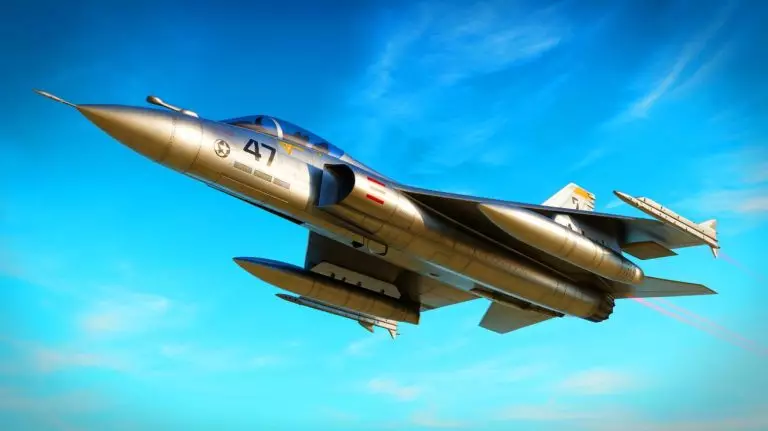| IN A NUTSHELL |
|
The unveiling of the F-47, the U.S. Air Force’s upcoming sixth-generation fighter jet, marks a significant leap forward in military aviation technology. With a combat radius far surpassing its predecessors, the F-47 promises to redefine air superiority. This ambitious project underscores the U.S. Air Force’s commitment to maintaining global dominance in speed, agility, and lethality. As nations worldwide race to develop their own advanced fighters, the F-47 stands as a testament to cutting-edge innovation. But what truly sets this aircraft apart is its combination of advanced stealth capabilities and unmatched range, ensuring that it remains a formidable force in the skies.
1,000+ Mile Combat Radius for F-47
The announcement of the F-47’s capabilities has sent ripples through the defense community. With a combat radius of over 1,000 nautical miles (1,150 miles), this aircraft is poised to outperform its predecessors significantly. To put this into perspective, this range is nearly 50% greater than that of the F-35, which has a radius of 670 nautical miles, and a staggering 70% more than the F-22’s 590 nautical miles.
General David W. Allvin, Chief of Staff of the U.S. Air Force, emphasized the aircraft’s stealth features, dubbing it the ‘Stealth++’ fighter. The F-47 is expected to fly at speeds exceeding Mach 2, doubling the speed of sound and rivaling the F-22’s capabilities. The Air Force plans to acquire more than 185 of these jets, highlighting the significant role they will play in future military operations. General Allvin stated that this modernization effort involves deploying assets that present adversaries with unique challenges while staying cost-effective.
What Are the Ranges of Other Sixth-Generation Fighters?
Globally, other nations are also advancing their sixth-generation fighter programs. John Hoehn, a policy researcher at RAND, pointed out that while a universally accepted definition for sixth-generation fighters has yet to be established, certain common attributes are emerging. These include enhanced stealth capabilities, cutting-edge avionics, and extended range, which surpass those of fifth-generation aircraft.
China’s J-36 fighter reportedly boasts a combat radius of approximately 1,500 nautical miles. Meanwhile, the United Kingdom’s Tempest program is revealing intriguing details about its capabilities. According to Group Captain Bill, the Tempest is designed to undertake long-range missions, potentially crossing the Atlantic on internal fuel alone. Such advancements suggest that a 1,000+ nautical mile range is becoming the benchmark for these next-generation fighters, further emphasizing the strategic importance of long-range capabilities in modern aerial warfare.
Weapon Capabilities
While range is a critical factor, payload capacity is equally crucial in determining a fighter jet’s effectiveness. The Tempest is anticipated to carry a payload approximately double that of the F-35A, the current U.S. stealth platform. This includes a mix of kinetic weapons, advanced sensors, and sophisticated computing hardware, with an internal payload capacity expected to exceed 10,000 pounds.
To illustrate, the F-35A typically carries about 5,000 pounds of internal ordnance, which includes two 2,000-pound bombs and a pair of long-range air-to-air missiles. The enhanced payload of sixth-generation fighters like the Tempest and F-47 underscores their potential to conduct complex missions with greater firepower and versatility. As the definition of a sixth-generation fighter solidifies, it is clear that these aircraft will represent a remarkable engineering achievement.
Advancements in Stealth and Technology
Stealth technology remains a cornerstone of the F-47’s design. By incorporating advanced materials and innovative design techniques, the aircraft aims to minimize its radar signature, making it more difficult to detect by adversaries. This ‘Stealth++’ capability ensures that the F-47 can operate effectively in contested environments, maintaining a tactical advantage.
Additionally, the integration of state-of-the-art avionics and electronics enhances the jet’s operational effectiveness. These systems improve situational awareness, allowing pilots to make informed decisions rapidly. The combination of speed, range, payload, and stealth makes the F-47 a comprehensive package, poised to dominate the skies in any conflict scenario.
As the U.S. Air Force and other military powers continue to advance their aerial capabilities, the question remains: How will these technological leaps shape the future of global air combat, and what new challenges will arise in the race for air superiority?
Did you like it? 4.5/5 (25)







Wow, 1,000 miles! That’s like flying from New York to Miami without refueling. Impressive! ✈️